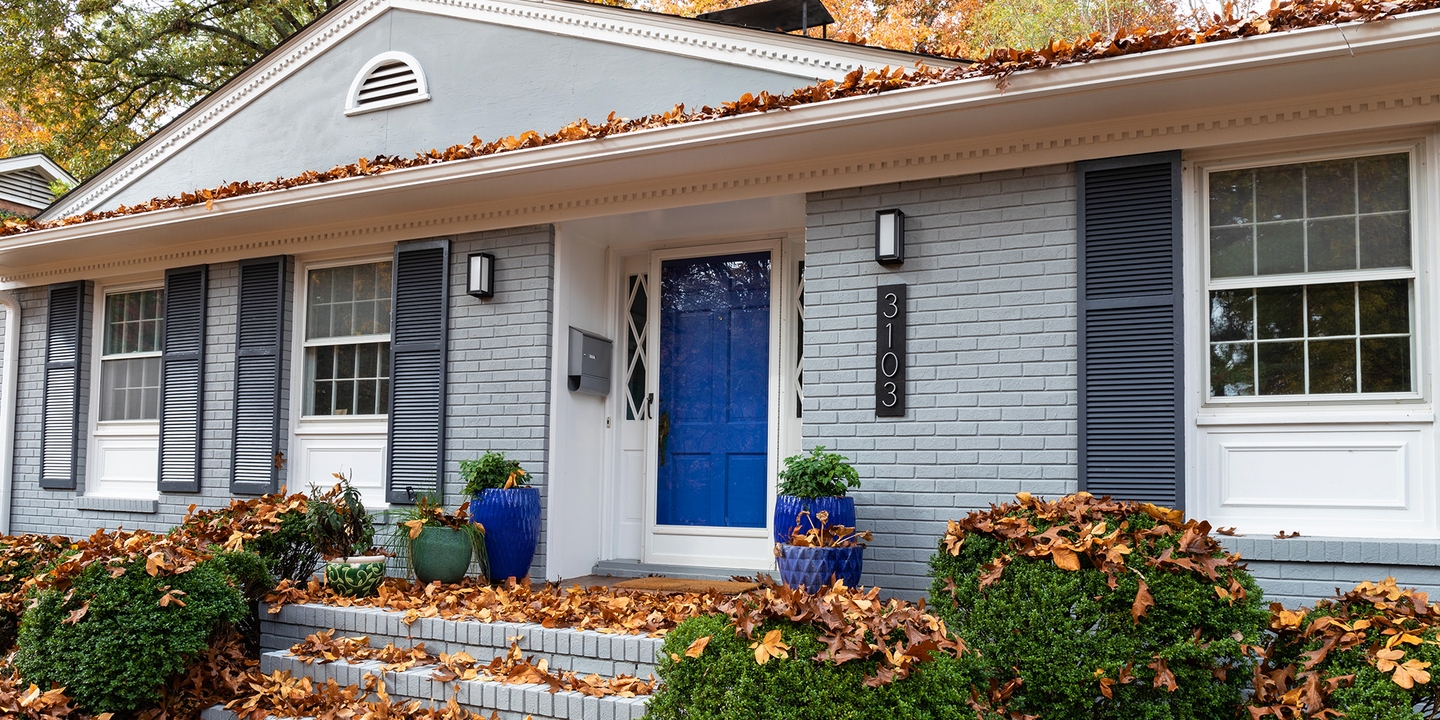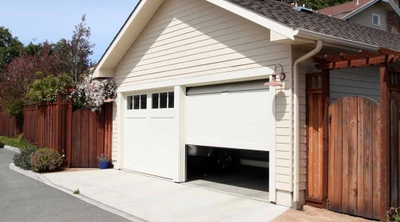Fall home maintenance tips
3 min read
Fall is the perfect time to address home maintenance tasks that will keep your home cozy, efficient, and well-protected throughout the coming winter. But it involves more than pulling out the fall decorations, digging out your sweaters, and sipping pumpkin spice lattes. While homeowners insurance can protect you from the unforeseen, it doesn’t cover basic wear and tear or seasonal maintenance.
Fortunately, most yearly home maintenance is simple and inexpensive to do yourself. Making and adhering to a seasonal home maintenance checklist can help you keep track of what you need to do and when you need to do it to keep your home in top condition all year round. So don't let that first hard frost in the fall sneak up on you.
Fall home maintenance checklist
How can you prepare your house for autumn? Here's a thorough fall maintenance checklist for your home:
1. Clean gutters and downspouts
Clean out leaves, debris, and dirt from your gutters and downspouts to ensure they're draining properly. Clogged gutters can lead to water damage to your house, ice damage, roof leaks, and gutter damage.
2. Inspect your roof
Inspect your roof and look for damaged shingles, cracks, and signs of wear. Damaged or missing shingles can expose your roof to leaks, which become more of a problem during the rain and snow in the fall and winter. Seasonal roof inspections and addressing any issues you discover are essential for preventing potential problems.
3. Seal windows and doors
According to the U.S. Department of Energy, heat loss through windows is responsible for up to 25%-30% of energy use for residential heating and cooling. Is it time to update your existing windows by adding caulking or weather stripping, or replace them with more energy-efficient windows? Check for gaps and cracks around windows and doors. Seal any openings with weather stripping or caulk to prevent cold drafts from entering your home.
4. Schedule HVAC maintenance
Schedule an inspection of your heating and cooling system with a licensed heating contractor. Clean or replace filters and ensure that your furnace or heat pump is working efficiently to improve your home's energy efficiency when the weather gets cold. Don't forget to bleed your hot water radiators to release trapped air and allow the hot water into the cold fins. Learn more about whether homeowners insurance covers HVAC systems.
5. Clean fireplace and chimney
If you have a fireplace, fall is a good time to schedule a chimney sweep to remove the creosote buildup. Ensure that the damper is functioning properly, and that the chimney is clear of any obstructions to prevent unpleasant surprises when you start your first fire in the winter.
6. Check insulation
Proper insulation is essential for keeping your home warm and reducing energy bills. According to the Energy Star, homeowners can save about 15% on heating and cooling costs by air-sealing their homes and adding insulation in attics, floors, over crawl spaces, and accessible basement rim joists. Check your attic for adequate insulation or have it inspected by a licensed contractor.
7. Drain and disconnect outdoor hoses
Drain and disconnect outdoor hoses at the end of the season and install faucet covers to prevent freezing and pipe damage. As temperatures drop during the fall and winter in cold climate areas, exposed pipes are at risk of freezing and bursting. To prevent frozen pipes, consider insulating exposed pipes in unheated areas such as basements, attics, and crawl spaces.
8. Care for your lawn and garden
Rake leaves to prevent them from suffocating your lawn over the winter season. Trim bushes and trees away from your house to prevent damage from winter storms. Tend to your woodpile and try to keep it at least 20 feet from your house to prevent pests from entering your home.
9. Test and replace smoke alarms & carbon monoxide detectors
Test and replace the batteries in smoke detectors and carbon monoxide detectors. These devices are crucial for your family's safety. Learn more about home fire safety.
10. Store outdoor furniture
Clean and store outdoor furniture and equipment in a dry, covered area. This will extend their lifespan and save you the hassle of dealing with damaged items in the spring.
Why is fall home maintenance important?
Proper fall maintenance ensures that your home is comfortable, safe, and energy efficient during the colder months if you live in a cooler climate. Regular upkeep can prevent minor issues from turning into major, expensive problems and homeowners insurance claims.
By addressing maintenance tasks now, you're not only protecting your investment but also creating a cozy, worry-free environment for you and your family to enjoy throughout the fall and winter seasons. So, grab your checklist and start ticking off those tasks. Your home will thank you for it.






